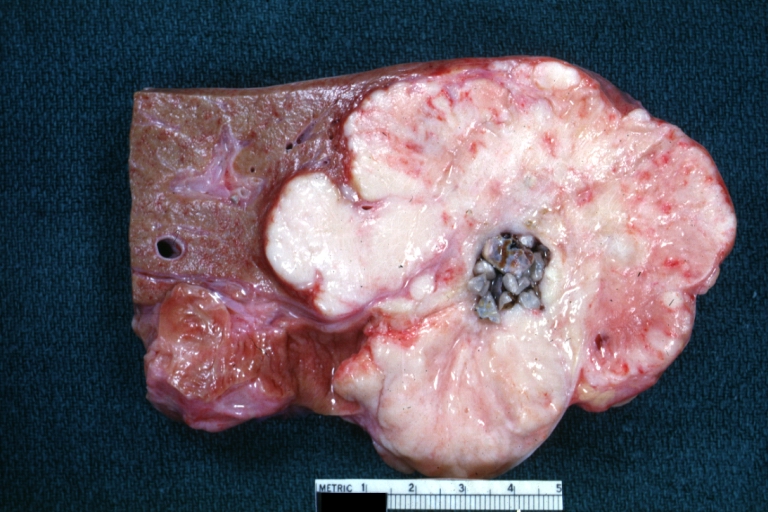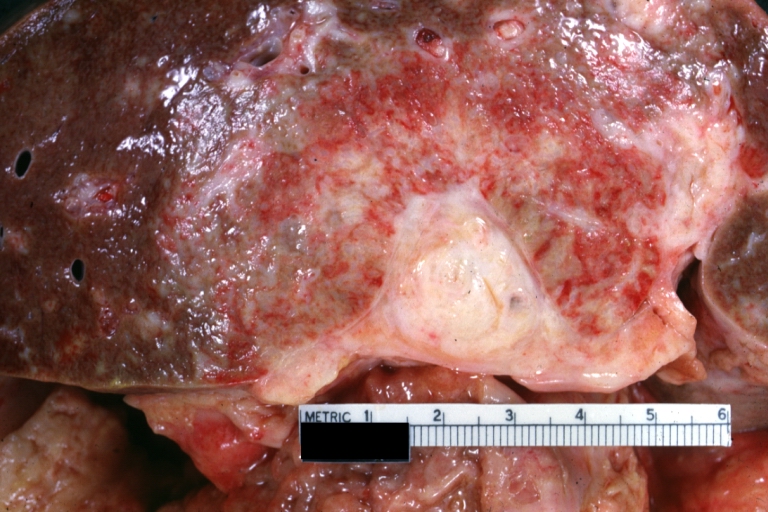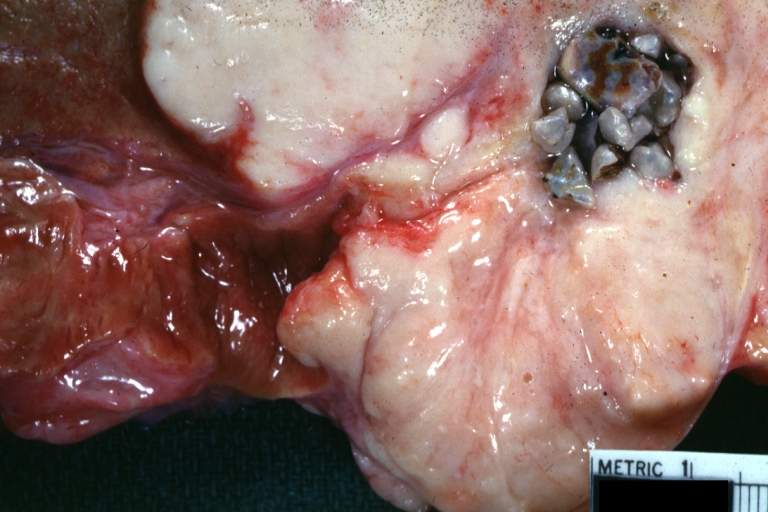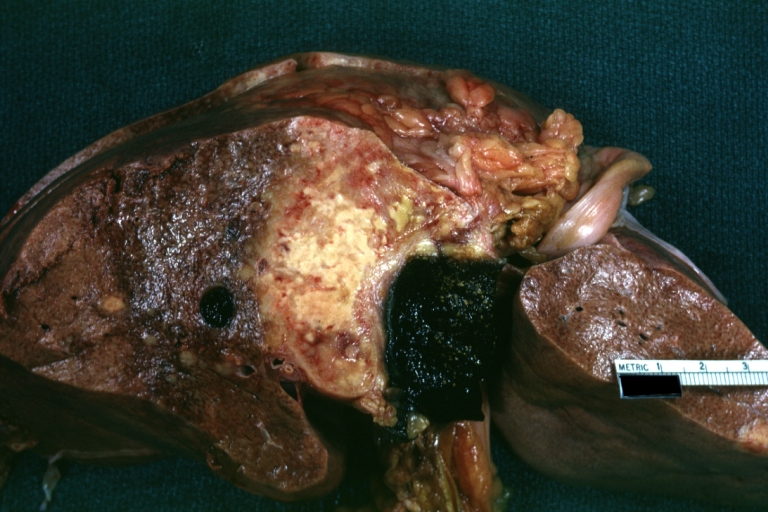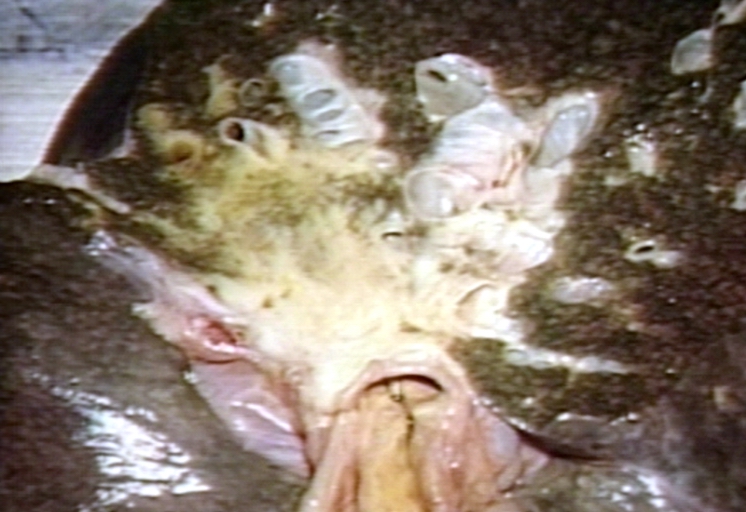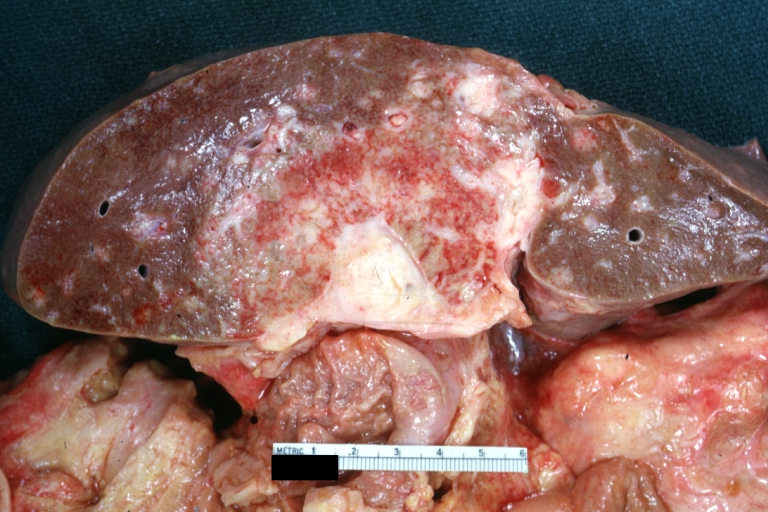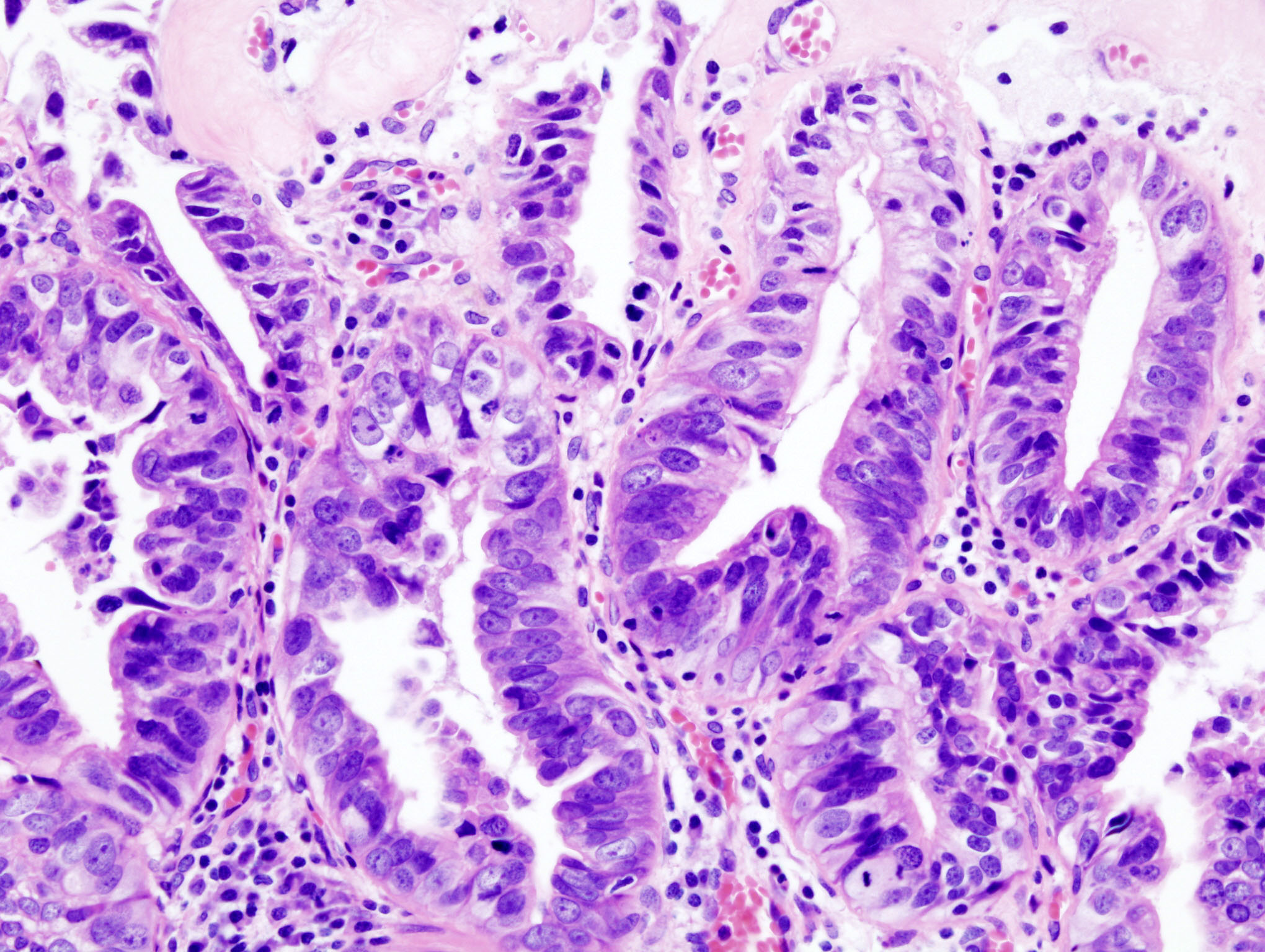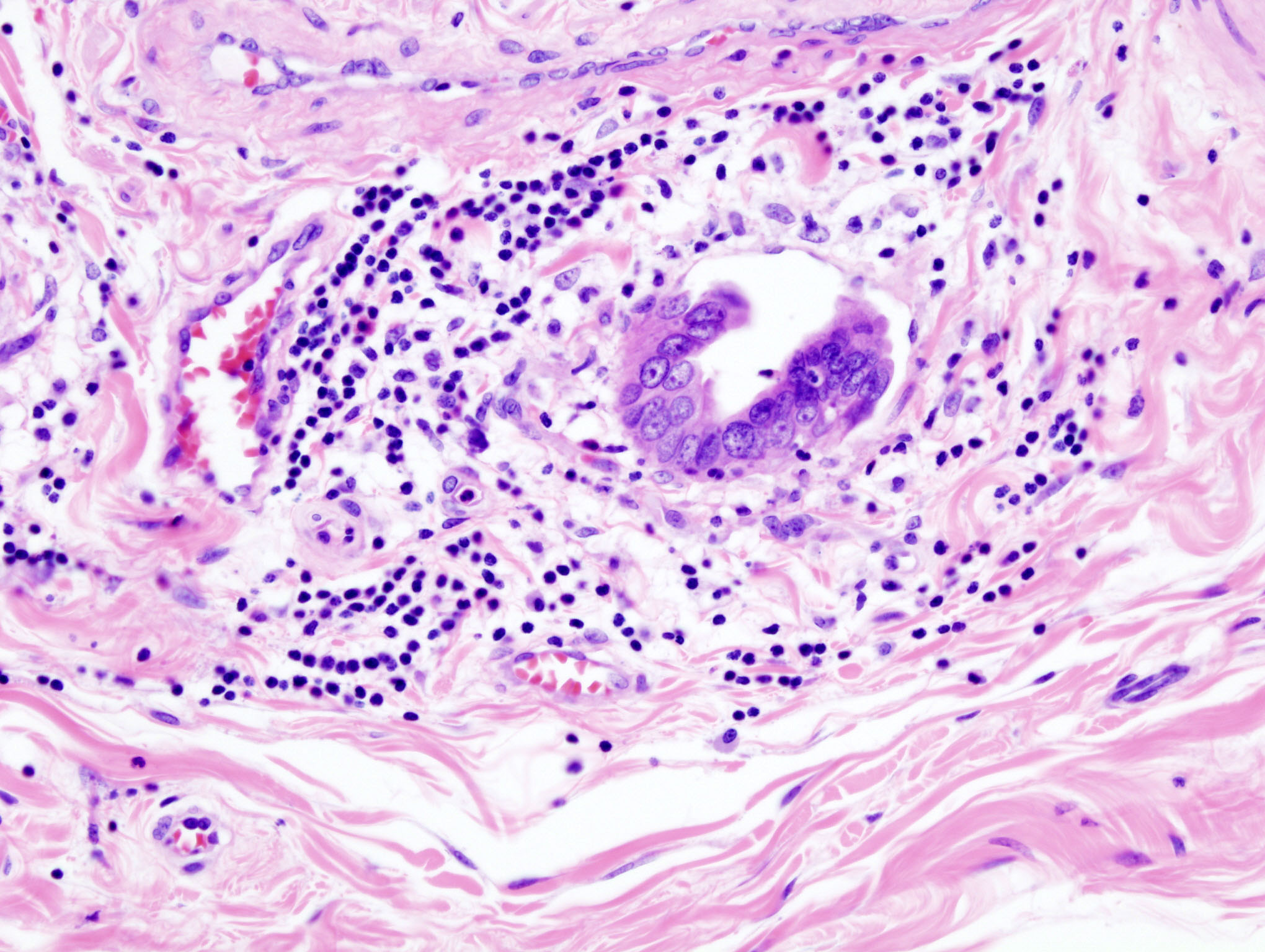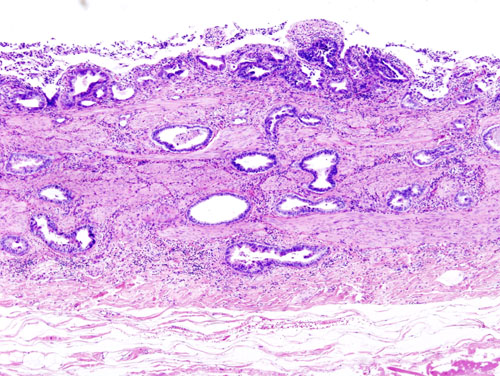Gallbladder cancer pathophysiology
|
Gallbladder cancer Microchapters |
|
Diagnosis |
|---|
|
Treatment |
|
Case Studies |
|
Gallbladder cancer pathophysiology On the Web |
|
American Roentgen Ray Society Images of Gallbladder cancer pathophysiology |
|
Risk calculators and risk factors for Gallbladder cancer pathophysiology |
Editor-In-Chief: C. Michael Gibson, M.S., M.D. [1]
Overview
The pathophysiology of gallbladder cancer depends on the histologic subtypes.
Pathological Findings
Squamous cell gallbladder cancer
Squamous cell cancers develop from the skin-like cells that form the lining of the gallbladder, along with the gland cells.
Adenosquamous gallbladder cancer
Adenosquamous carcinomas are cancers that have both squamous cancer cells and glandular cancer cells.
Small cell cancer of the gallbladder
Small cell carcinomas are also called oat cell carcinomas. They are called this because the cancer cells are a distinctive oat shape.
Gallbladder sarcomas
Sarcoma is the name for a cancer that affects the supportive or protecting tissues of the body – also called the connective tissues. Muscles, blood vessels and nerves are all connective tissues. A cancer that begins in the muscle layer of the gallbladder is a sarcoma. Over 90% of cases of gallbladder cancer are adenocarcinomas.
-
Gallbladder carcinoma: Gross, natural color, close-up view of liver and gallbladder slice with typical neoplasm invading liver and surround a cavity with mixed type gallstones
-
Gallbladder carcinoma: Gross, natural color close-up view of gallbladder obliterated by white neoplasm with invasion of liver in a sunburst pattern slice of liver and gallbladder (an outstanding example of this rather rare tumor)
-
Gallbladder carcinoma: Gross, natural color shows stones in middle of tumor localization
-
Gallbladder carcinoma: Gross, natural color slab of liver with gallbladder
-
Gallbladder: Adenocarcinoma, arising from bile ducts
-
Gallbladder carcinoma: Gross, natural color of slice of liver showing attached gallbladder obliterated by tumor and with tumor invading adjacent liver parenchyma like a sunburst (an excellent example)
Microscopic Pathology
-
Gallbladder adenocarcinoma histopathology
-
Gallbladder adenocarcinoma: Lymphatic invasion histopathology
-
Gallbladder adenocarcinoma: Incidentally discovered gallbladder cancer (adenocarcinoma) following a cholecystectomy. H&E stain
